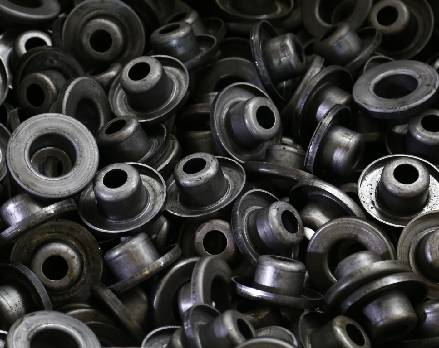 Afrikaans
Afrikaans  Albanian
Albanian  Amharic
Amharic  Arabic
Arabic  Armenian
Armenian  Azerbaijani
Azerbaijani  Basque
Basque  Belarusian
Belarusian  Bengali
Bengali  Bosnian
Bosnian  Bulgarian
Bulgarian  Catalan
Catalan  Cebuano
Cebuano  Corsican
Corsican  Croatian
Croatian  Czech
Czech  Danish
Danish  Dutch
Dutch  English
English  Esperanto
Esperanto  Estonian
Estonian  Finnish
Finnish  French
French  Frisian
Frisian  Galician
Galician  Georgian
Georgian  German
German  Greek
Greek  Gujarati
Gujarati  Haitian Creole
Haitian Creole  hausa
hausa  hawaiian
hawaiian  Hebrew
Hebrew  Hindi
Hindi  Miao
Miao  Hungarian
Hungarian  Icelandic
Icelandic  igbo
igbo  Indonesian
Indonesian  irish
irish  Italian
Italian  Japanese
Japanese  Javanese
Javanese  Kannada
Kannada  kazakh
kazakh  Khmer
Khmer  Rwandese
Rwandese  Korean
Korean  Kurdish
Kurdish  Kyrgyz
Kyrgyz  Lao
Lao  Latin
Latin  Latvian
Latvian  Lithuanian
Lithuanian  Luxembourgish
Luxembourgish  Macedonian
Macedonian  Malgashi
Malgashi  Malay
Malay  Malayalam
Malayalam  Maltese
Maltese  Maori
Maori  Marathi
Marathi  Mongolian
Mongolian  Myanmar
Myanmar  Nepali
Nepali  Norwegian
Norwegian  Norwegian
Norwegian  Occitan
Occitan  Pashto
Pashto  Persian
Persian  Polish
Polish  Portuguese
Portuguese  Punjabi
Punjabi  Romanian
Romanian  Russian
Russian  Samoan
Samoan  Scottish Gaelic
Scottish Gaelic  Serbian
Serbian  Sesotho
Sesotho  Shona
Shona  Sindhi
Sindhi  Sinhala
Sinhala  Slovak
Slovak  Slovenian
Slovenian  Somali
Somali  Spanish
Spanish  Sundanese
Sundanese  Swahili
Swahili  Swedish
Swedish  Tagalog
Tagalog  Tajik
Tajik  Tamil
Tamil  Tatar
Tatar  Telugu
Telugu  Thai
Thai  Turkish
Turkish  Turkmen
Turkmen  Ukrainian
Ukrainian  Urdu
Urdu  Uighur
Uighur  Uzbek
Uzbek  Vietnamese
Vietnamese  Welsh
Welsh  Bantu
Bantu  Yiddish
Yiddish  Yoruba
Yoruba  Zulu
Zulu Comprehensive Components of Belt Conveyor Systems
Components of a Belt Conveyor System
Belt conveyor systems are essential in various industries, serving as a reliable method for transporting materials over short to moderate distances. The efficiency and effectiveness of these systems largely depend on their fundamental components. Understanding these components is crucial for optimizing performance, ensuring safety, and maintaining operational longevity.
1. Belt
The belt is the most critical component of a conveyor system. Made from materials such as rubber, fabric, or metal, it is designed to withstand the load and the environment in which it operates. The type of belt selected depends on the material being transported as well as the required durability and flexibility. Tensioning mechanisms must also be considered to ensure the belt remains taut and operates smoothly.
2. Pulleys
Pulleys are the circular components around which the belt rotates. They are typically comprised of a drive pulley, which costs power to move the belt and load, and a return pulley, which guides the belt back to the starting position. Both pulleys must be carefully chosen in terms of material and diameter to ensure optimal performance of the conveyor system. The alignment of pulleys is vital to prevent belt misalignment and undue wear.
3. Idlers
.
Idlers are support rollers placed along the length of the conveyor to maintain the belt’s tension and support its load. They help in minimizing friction and wear between the belt and the chassis. Usually made of steel or rubber, they come in various designs, including troughing and flat styles, depending on the type of load being conveyed.
4. Frame
components of belt conveyor system

The frame is the structural support of the conveyor. It is typically constructed from steel or aluminum and must be robust enough to support all components and the material load. Proper frame design is crucial for the stability and longevity of the entire system. Custom frame designs may also be necessary to accommodate unique operational environments.
5. Drive System
The drive system, which typically includes a motor and gearbox, provides power to the conveyor. The motor’s capacity must match the load requirements and speed of operation. Proper integration of the drive system with the pulleys ensures efficient movement and minimizes the risk of mechanical failure.
6. Control System
Modern belt conveyor systems are often equipped with control systems that allow for easy operation and monitoring. These systems can include sensors, variable frequency drives, and programmable logic controllers (PLCs) that enhance operational flexibility and safety by providing real-time feedback and automation.
7. Safety Devices
Safety devices such as emergency stops, guards, and pull cords serve as critical components to ensure the safety of personnel working near or with the conveyor system. Regular inspections and proper maintenance of these devices are essential to prevent accidents.
Conclusion
In conclusion, the effectiveness of a belt conveyor system hinges on its components including the belt, pulleys, idlers, frame, drive system, control system, and safety devices. Understanding each of these components and their interactions can lead to better design, improved efficiency, and enhanced safety in conveyor operations. Regular maintenance and upgrades ensure sustained performance in a competitive industrial landscape.
-
Revolutionizing Conveyor Reliability with Advanced Rubber Lagging PulleysNewsJul.22,2025
-
Powering Precision and Durability with Expert Manufacturers of Conveyor ComponentsNewsJul.22,2025
-
Optimizing Conveyor Systems with Advanced Conveyor AccessoriesNewsJul.22,2025
-
Maximize Conveyor Efficiency with Quality Conveyor Idler PulleysNewsJul.22,2025
-
Future-Proof Your Conveyor System with High-Performance Polyurethane RollerNewsJul.22,2025
-
Driving Efficiency Forward with Quality Idlers and RollersNewsJul.22,2025





























